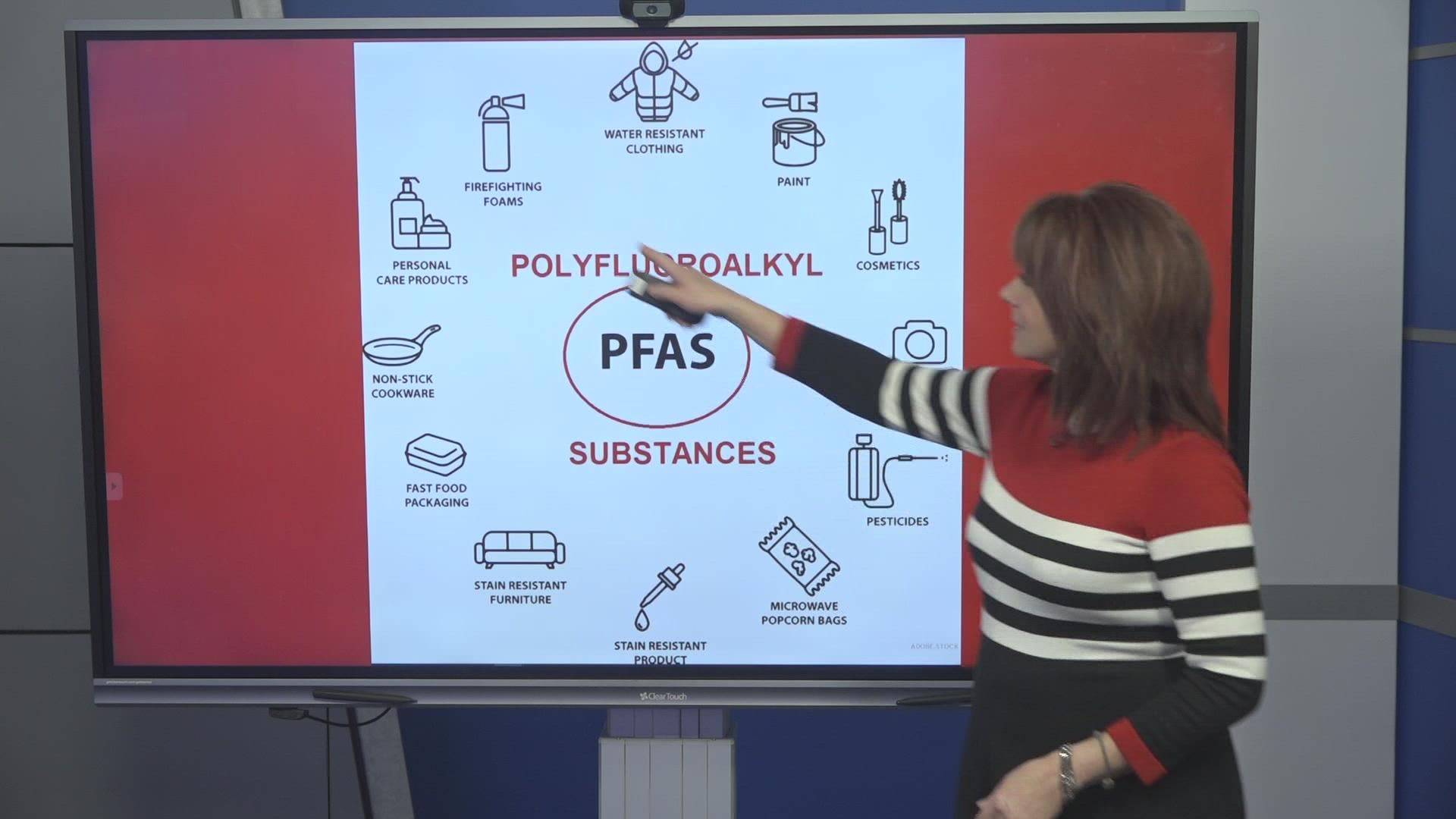GREENSBORO, N.C. — PFAS are chemicals found in all kinds of products, as well as in the air, water, and soil.
The Guilford County Department of Public Health is asking residents around PTI to allow testing of their water to see the levels of PFAS due to possible contamination from firefighting foam.
But all of us need to be concerned about PFAS and know how to reduce our risk and exposure. PFAS are often in the clothes you wear, the make-up you put on your face, and maybe even the couch you're sitting on right now.
“PFAS are known as forever chemicals because they essentially never break down naturally. And they are often added to products to make them waterproof, stain resistant, or nonstick,” said Kevin Loria, Consumer Reports.
In recent years, PFAS has been linked to a growing list of health problems including increased risk for certain cancers, liver damage, and neuro-developmental
problems.
One source of PFAS that has gained a lot of attention since COVID with so many of us getting our food to-go is the containers our food comes in.
Consumer Reports looked at popular retailers and tested their packaging for PFAS. They tested more than 100 food packaging products.
“PFAS can migrate from packaging into the food you eat, like that burger wrapped in paper that contains PFAS, or that salad in a molded fiber bowl,” said Loria.
Paper bags, molded fiber bowls, and single-use plates had the highest PFAS levels on average of all the food packaging tested. While take-out containers and paper trays had some of the lowest.
The EPA has steps you can take to reduce your risk, reduce exposure in drinking water, when you eat fish and when use everyday products.

